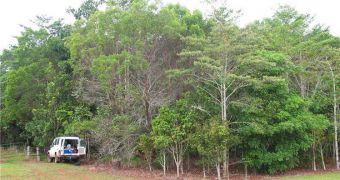In a new scientific investigation, scientists in Australia were able to determine that the best way to capture vast amounts of the dangerous greenhouse gas carbon dioxide is to turn to reforestation. They say that this is more efficient than installing the already-controversial softwood monoculture plantations that everyone seems to be peddling nowadays. The new report is a challenge to established knowledge on how to best extract carbon dioxide from the atmosphere, AlphaGalileo reports.
“Carbon markets have become a potential source of funding for restoration projects as countries and corporations seek the cheapest way to reduce carbon emission. However, there is a concern that this funding will encourage single species monoculture plantations instead of diverse reforestation projects, due to the widely held belief that monocultures capture more carbon,” says Australian Wildlife Conservancy expert Dr John Kanowski. Details of the new investigation appear in the latest issue of the esteemed scientific journal Ecological Management & Restoration.
“We found that restoration planting stored significantly more carbon in above-ground biomass than the monoculture plantations of native conifers and tended to store more than mixed species timber plantations. Compared to the monoculture plantations reforestation projects were more densely stocked, there were more large trees and the trees which were used had a higher wood density then the conifers at the plantation,” the expert adds.
Generally speaking, softwood monoculture plantations are used mostly as a source of cheap timber and rubber, among other things. They are grown industrially, but lack diversity. This has earned them the name “green desert,” and has made them extremely controversial among ecologists, with some saying they do more harm than good. “In order to be an attractive prospect for the markets new reforestation techniques and designs are going to be required. New designs will have to ensure that restoration can provide a habitat for rainforest life and store carbon at a cost comparable to industrial monoculture,” Kanowski concludes.

 14 DAY TRIAL //
14 DAY TRIAL //